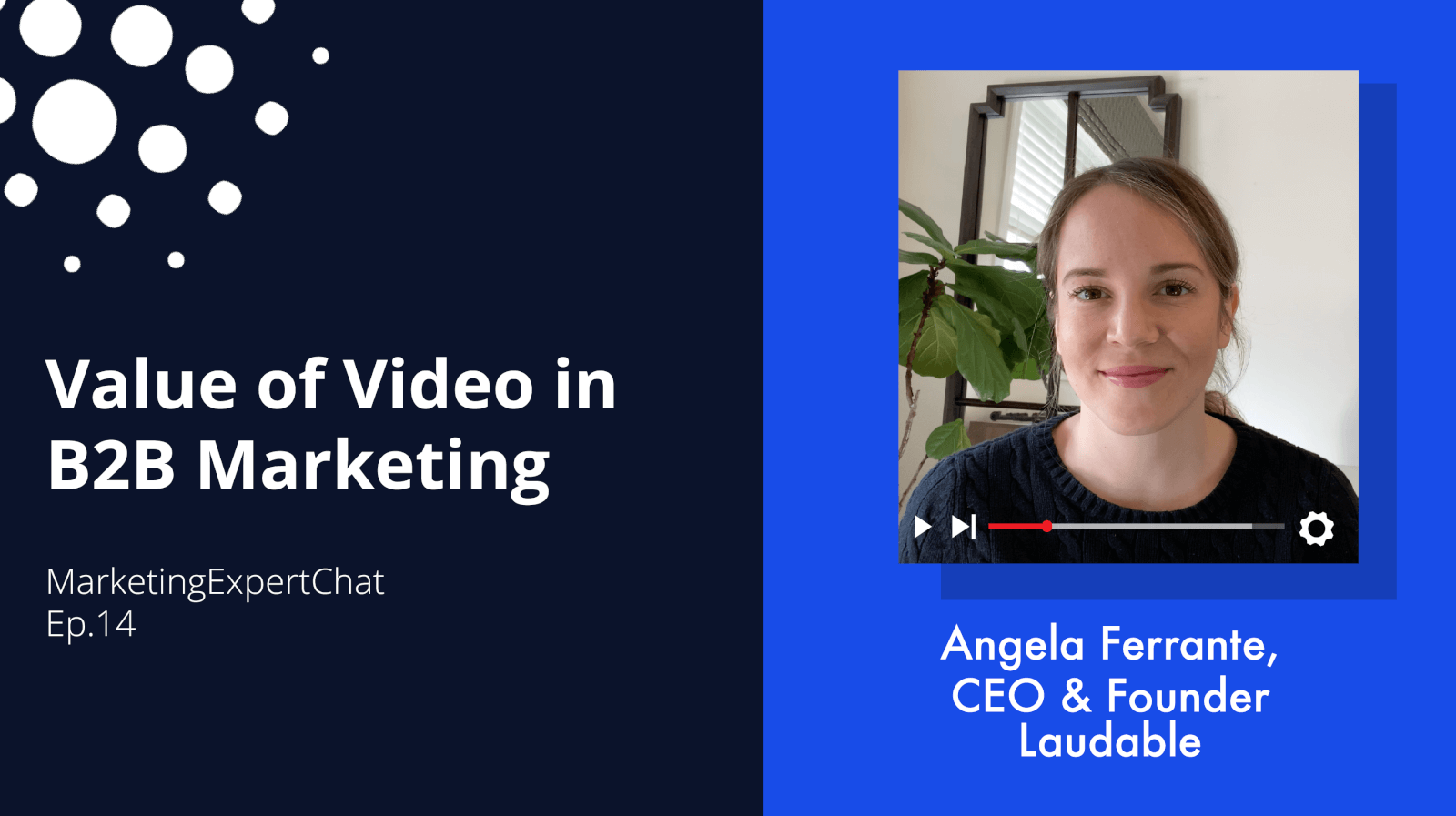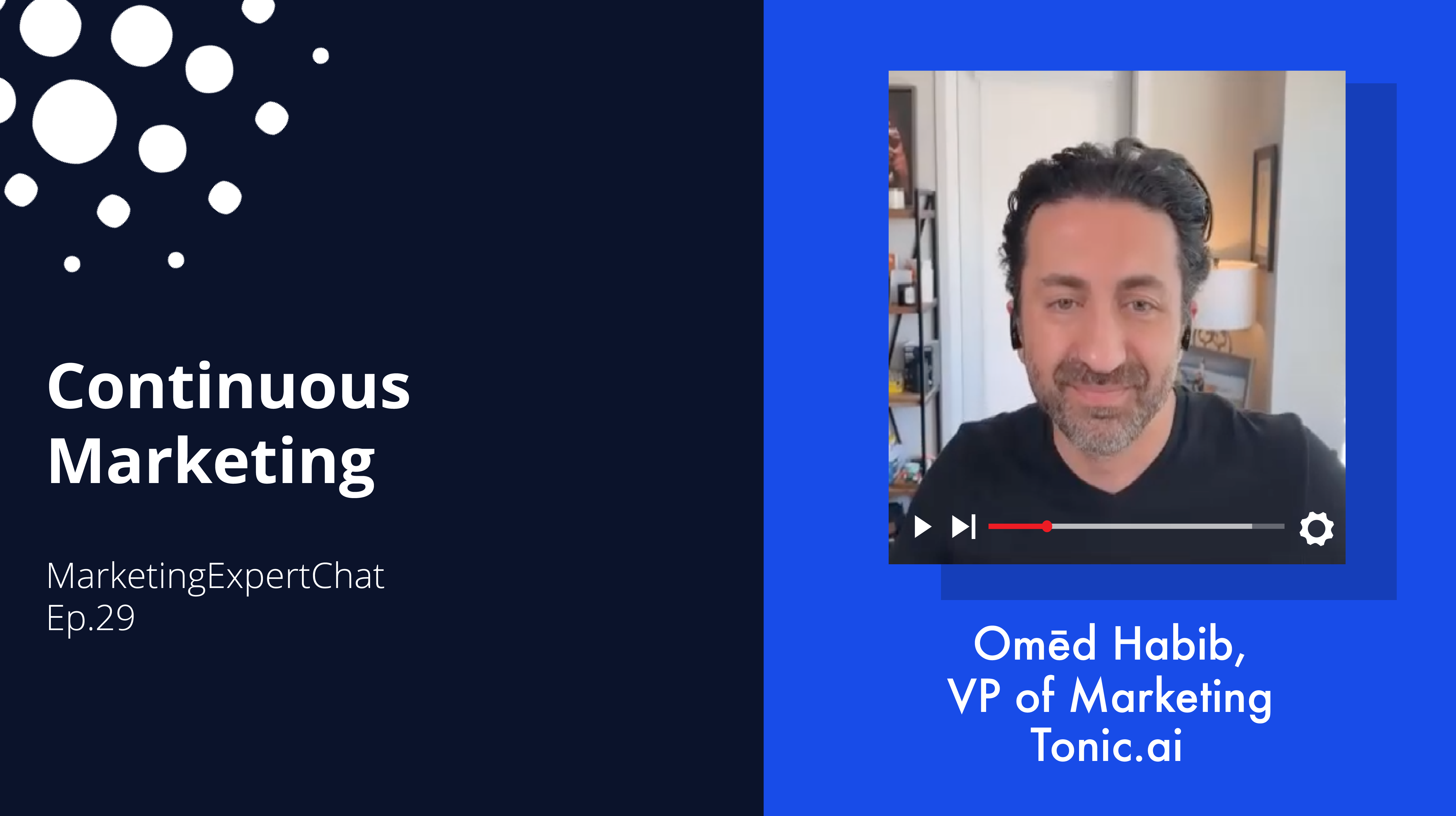Most B2B marketing and sales teams follow the same selling model without even realizing it.
From generating content to closing deals, the entire process focuses on a single goal: persuading B2B buyers to purchase your solution and introduce it to their organization. This is so common that most marketers barely think about it, but it actually has a name – ”top-down marketing” - and there is an alternative approach that can actually produce better results for many companies.
We sat down with Maria Ospiova, the VP of Marketing for Penny AI, to discuss “bottom-up marketing”: an approach she has mastered over a decade working for numerous SaaS companies.
This article distills some of her best insights (as well as including the full interview transcript!). Expect to learn:
-
How to approach the bottom-up marketing strategy & communicate with the audiences
-
The benefits of such a long-term growth marketing investment
-
Success stories & how to replicate the strategy for your business’s needs
But let’s begin with the simplest question:
What is a Bottom-Up Growth Marketing Strategy?
A bottom-up marketing strategy focuses on building a relationship with the end-users of your product, not the handful of individuals within the company who have the power to make large corporate purchases. The aim is to build demand amongst these users that is difficult for these corporate buyers to ignore – and ultimately convince the buyers to make a purchase.
This approach has worked for some of the biggest B2B brands that emerged in recent years, such as Slack: users came to love the tool, which put pressure on buyers to bring it in as a centralized solution for their company. But what are the benefits of this approach?
3 Reasons to This Marketing Approach
1. Inspire More Passion
Marketing directly to users makes the value of your offering immediate and concrete. Every marketer knows the most effective messages tap into specific pain points, but this is often harder with buyers who don’t use the product. They are often trying to solve abstract problems, such as “employee engagement” - which are inherently less tangible. The solution might improve the buyer’s KPIs, but this could take months.
In contrast, an end-user can immediately feel the improvement in their daily life when they discover a powerful solution. This makes them stronger advocates for the product – because they know exactly how it will improve their lives. Get a hundred different users all passionately asking for the same solution, and budget holders will have to listen.
2. Increase Loyalty
Solutions that grow through bottom-up marketing often build a sense of community amongst users, which ultimately increases long-term trust and loyalty. Buyers may feel they must sign a new contract or repurchase the product because otherwise they will face angry users.
Bottom-up marketing also focuses on the factors that generate loyalty. A top-down approach tends to emphasize what executives want, which may not be directly relevant to the average user. But a bottom-up approach helps to ensure you are providing the maximum value and support for the end-user.
3. Organic Growth
Finally, bottom-up marketing can be more cost-effective – depending on how you implement the strategy. Buyers are often difficult and expensive to reach, and while they routinely share content with other members of the buying team or influencers, there is little incentive for them to share a promising new solution with friends who work for other companies.
In contrast, end-users are very likely to share a new solution they believe their colleagues or friends will benefit from. This can lead to significant (and highly cost-efficient) organic growth, with brand awareness spreading almost exponentially if users really love your solution.
What Are the Limitations?
Despite these benefits, it’s important to note that not every B2B business realistically takes a bottom-up approach. There are a few factors to consider:
What Is Your User-to-Buyer Ratio?
Bottom-up marketing works best when you can appeal to a larger group of end-users. A complex healthcare software solution might be used by a handful of experts within any given organization – meaning there are as many buyers as end-users. This would make bottom-up marketing a reasonable option, but not necessarily a superior one.
Can Users Try Your Solution?
Imagine trying to build advocacy around a product nobody had actually used. If your solution requires expensive new hardware, for example, few end-users are likely to experience it without a corporate buyer introducing it to their organization. It might be possible to arrange a promotional event where users can try the product out, but this is likely to be very expensive – and require a lot of legwork.
Are Your Ideal Buyers Responsive to User Demand?
Many B2B solutions really are better matched to the needs of buyers than users. For example: a product or service whose main selling point is cost-efficiency will probably not spark excitement amongst users, and a top-down approach will be more compelling.
Ultimately, bottom-up marketing is an approach which is best suited for B2B SaaS solutions that are built around providing value for the end-user and are highly scalable, as this allows them to build a large groundswell of passionate users. But how would you specifically do that?
3 Key Aspects of Bottom-Up SaaS Marketing
1. Brand Awareness
Bottom-up marketing requires consistent engagement to create awareness and establish your brand. This could be achieved through PPC advertising, online thought leadership events or organic content and social media – the point is simply to ensure your brand is doing something every single day. It could take multiple months before you gain any traction with this - and you may need the help of a social media expert or webinar marketing agency - but it will quickly compound once you do.
2. Value-First Message
You need to understand exactly what end-users value in your solution and ensure your messaging aligns with it. Essentially, bottom-up marketing treats your end-users the same way more traditional top-up marketing would buyers: address pain points, offer clear solutions and put value at the heart of everything you do.
3. Conversion End-Game
While bottom-up marketing is about building a relationship with users, it’s important to encourage them to push for a full corporate purchase. Avoid excess “sales pushes” too early in the process, but once you have users that are highly engaged, make clear to them the benefits (for their wallet more than anything else!) of convincing their employer to buy the product for the whole organization.
Rethink Your Marketing with a B2B Growth Marketing Agency
Bottom-up marketing is not right for every company, but exploring this novel approach leads us to a more important point: the way you currently approach marketing is not set in stone. Too often, B2B businesses assume there is a single set of “best practices” they must follow – and therefore overlook a range of opportunities to experiment and accelerate their growth.
At ProperExpression, we pride ourselves on understanding the full range of marketing possibilities – and offering expert services that apply to every one of them. That means we can help you plan, implement and optimize the right marketing strategy for your business, not just the one that fits our skillset.
View Our Full Conversation with Maria Ospiova
Want to explore bottom-up marketing in more detail? Check out the full video and transcript:
Video Transcript:
CAROLINE: Hi, welcome to Growth Marketing Chat. Today, I’m here with Maria Osipova. Maria is a marketing leader. She’s been in SaaS for a long time. She’s been the VP of Marketing at three different SaaS companies. And today, she is the VP of Marketing at Penny AI. Maria, thank you so much for being with me today.
MARIA: So happy to be here. Thank you for having me.
CAROLINE: Great. So, today, we’re gonna talk about a marketing approach that is not all that common but very successful companies have used it, which is having a bottoms-up approach in SaaS. And by this, we mean, instead of trying to go and convince the decision-maker on the enterprise level, who’s not necessarily the user, targeting the user that is actually gonna use the product every day. So, this is what you’re doing for, for Penny AI, and I’d really like to have kind of your thoughts on how to utilize such a strategy successfully.
MARIA: That’s a great question, and as I joined Penny AI, I was really, really excited about the opportunity to actually market to two different audiences. One is, as you said, it’s Penny users, and just a little bit about Penny… Penny’s a data-driven sales enablement platform built specifically for direct sales or for micro-entrepreneurs. So, when I’m talking about users, think women that sell Tupperware. Think, you know, of consultants of anyone, an army of one that’s running their business and that needs help supporting those businesses. So, this is the audience on one side.
On another side, when we talk about the direct sales industry, there are huge corporations that have millions of those users and millions, millions of consultants in the field. Yet, they are the ones that’s writing the brand, the messaging, the enablement. So, those are two very, very different audiences with very different interests. And obviously, while a day to day up-sale is, the users. The large contracts for the platform is within the corporate.
So, the way we approach it, and really, this strategy had been used by Slack, by LinkedIn, you know, we’re all using the tools and then, we’re all recommending it to each other. And then, somehow, the corporate kinda hears about this and brings it in as a centralized solution. So, in a similar way, we’ve approached our strategy and looked at, well, how can we build the brand? How can we build the value with the users so much that they get attached to the tool, that they want to become champions and bring it up to their corporate, to their leaders, to make sure that everyone within their group has this tool, and then, becomes valuable enough to have the conversation at the corporate level.
So, I would say the step one is really build the brand within the users and build the loyal people that love the tool. The way we’ve done it is not just, you know, user-experience on its own. There is more to the brand that delivers value and we’re very much focused on delivering value to people that are crazy busy running their families, running their businesses, trying to do 10,000 things at one. Within our industry, there is very little education or enablement that’s set up when people join those companies. So, that’s where we found an opportunity. And one of the things we’ve recently launched is Penniverse, which is this educational hub that delivers the bits and pieces of what’s needed to become a great seller within the direct sales industry, and also, how to use our tool to the best of the abilities to save even more time and result, and even in more sales. So, that’s where we started.
Another example is really celebrating users. You know, if we want people to love us back, well, we should be the first ones to start that. So, some of the programs we’ve ran is celebrating real life of people. There is a lot of, kinda, glomerate brand building within the industry and you see, you know, perfect people with perfect lives. Well, we started telling the stories of what day-to-day looks like to get to the high level, to get to the earnings that people see within that industry. And on the other hand, we started celebrating power users within Penny. So, if we see that someone kills their dailies, does the tons of tasks, well, right inside the app, we pop up, we thank them for being the champion, and then, give them, you know, a card or something. It’s like, “Hey, high five, give yourself a pat on the back. You have been using the tool.” And that has been really successful. And yes, generated these positive feelings where we invest into someone’s day or into someone’s happiness within the day.
So, those are some of the things we’ve done on the brand side, but then what about the corporate? How do they find out? Do we just rely, you know, that someone loves us enough to bring it up and to try to implement the solution? Well, there is another part. And, as we’re seeing, kinda sufficient amount of users within a company, we start being able to see, well, did their sales increase? Did they use the tool, and did they blend more customers within, you know, with increased usage? And this is the data that we, then, can bring to the company essential real true ROI that says the impact we’re having on a small subset of few users, well, what happens if we go to every user?
If the small subset has increased their sales by 50%, and we haven’t even, you know, approached it at the corporate level. We haven’t drove, driven the change. We haven’t forced them to use it. What happens when the adoption is widespread? What happens when we train the entire force when using Penny to the best of their abilities, and then it starts to click. Then, we’re not just saying, it’s like, “Hey, look, there’s thousands of ways you can spend money. Look at us.” It’s like, “No, this is the results we’re seeing at a tiny subset with a new company. What happens if you actually bring it to everyone?” And that starts conversations. And then, we make sure that we’re hyper, hyper-targeted. We don’t blast that to everyone. We, actually, go to the corporate and share the message, and I would say, so far, have seen really good results in terms of starting those conversations. And also, just the way that Penny is loved by the users is really incredible. We’re lucky to have that industry where people feel very strongly about the tools that they’re using.
CAROLINE: Well, I think it’s a, it’s pretty fantastic insights. And when you think about it, it brings, brings a lot, probably, to the company, right, by having the users be your first and most important users, right?
MARIA: Yep.
CAROLINE: It, probably, helps you develop something that they really care about, they really love using, you know. A lot of the time when you go from a top-down approach, you go with what the executive wants, right? But it’s maybe totally disconnected with the life of the user and what they really want.
MARIA: That’s a really, really important part. And also, a lot of companies, you know, finish the relationship with the user as soon as the sale is over. And then, “you’re inside the app, figure it out.” To be able to continue delivering value and have that keen eye before anyone engaged with us… Hey, if you just want to learn about direct sales best practices, just do. You know, whether you’re using Penny or not, this is something that we’re giving to the industry. If you do use Penny, here’s the education on Penny. But this is the relationship that continues with them and the focus on value throughout the entire cycle of before the engagement with Penny. Whether they’re in the tool, whether they left the industry and never, you know, maybe you’re no longer in direct sales, but they still have that positive memory of anything, like, this is where we’ve learned, this is what made me successful. If you’re in that industry, I’m the champion, and in a way, while it’s really hard to measure as a marketer, and I’m very much a data-driven demand generation-focused marketer, this is the type of brand impact that becomes the multiplier later on. Where you don’t have to pay for every interaction and every engagement.
Where you’ve invested enough into that relationship where they become the multiplier, spreading the word. And that’s what helps us keep that lens on the value. Every time we’re thinking about this, this is not just a transaction that spits out the money. This is really something that we build for the long-term and the value is the investment. You know, that we’re putting in into the users, and then, they bring into their customers as well, and that kinda brings the positive cycle, which is pretty amazing to be part of.
CAROLINE: It is. It is. And when you think about it, you know, all successful, like most successful brands, users love them, and it’s difficult to quantify, as you said, but there’s a pattern here, right?
MARIA: A hundred percent agree, and when I tried to figure out the area of focus was the team, one of the things I do is try to keep an eye on, kinda three key areas. One of them is brand, hardest to quantify, but almost like brushing teeth. You gotta do something towards it every single day.
CAROLINE: I love this.
MARIA: Right? So, whether it’s social media, whether it’s investment into the relationships, whether it’s the community type of work, nowhere near, like, demand generation spitting out the pipeline. No, yet. This is, like one-third of the efforts always has to be put in there. Obviously, pipeline demand generation can never get an eye off that. That’s part of the strategy.
And then, another one is sales enablement and post-purchase the life cycle was the users. Okay. We have them on Penny, maybe they’re using this now. How do we make sure that they always stay there, and make sure that the features actually reflect what it is they’re looking for? And we’re adding value, post-user. And it’s really, really easy to drop that as well. But that’s kinda the three areas of focus that sometimes we’ll focus the entire quarter on just one. And then, it’s something that’s replicatable after. And other times, we just try to keep it between the three, you know, balancing that in the air.
But brand is always, and brand from, kinda every interaction type of way. Not just brand as the logo and the colors, but it’s the feeling of value in connection with the user that send the audience that we build by investing into it before we have to, you know, withdraw and ask for anything.
CAROLINE: Right. Exactly. Exactly. Alright. Well, Maria, this was so fascinating. Thank you so much for joining today and sharing your insight. I really appreciate it.
MARIA: Thank you so much. It’s been a great conversation. Thank you for letting me share some ideas.






